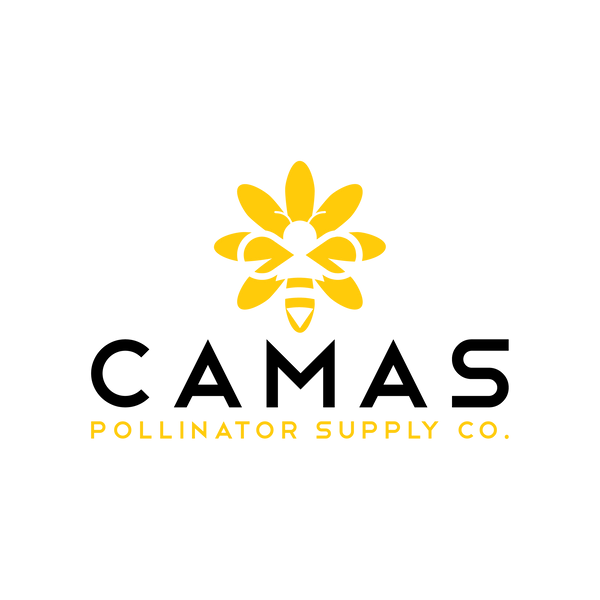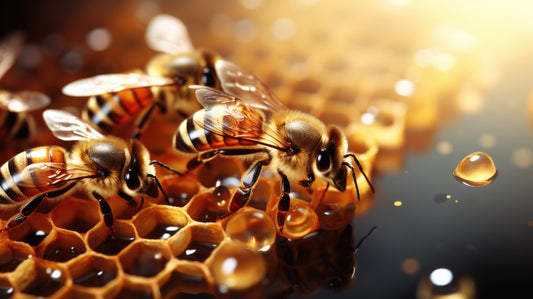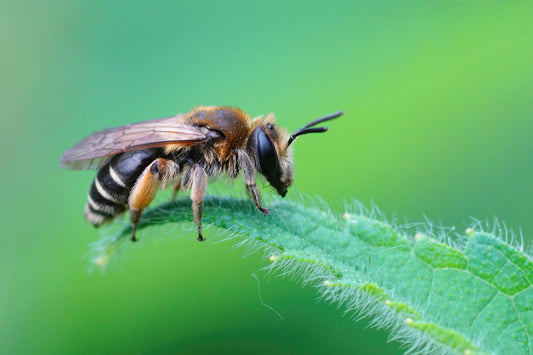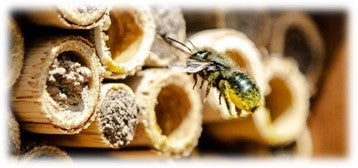
As February's chill lingers, an urgent drama unfolds in gardens across America. Queen bumblebees stir from winter slumber, their energy reserves depleted. Mining bees tunnel upward through frost-kissed soil. Monarch butterflies navigate thousand-mile journeys, searching for the first spring blooms. Yet increasingly, these essential pollinators emerge to find food deserts – landscapes dominated by ornamental plants that offer little sustenance.
The statistics are sobering: 40% of native bee species face decline, with early spring being the most critical survival period. But there's hope. By transforming our gardens into pollinator sanctuaries, we can provide vital support when these creatures need it most.
Understanding the Spring Pollinator Crisis
Why Early Spring is Critical
-
Queen bumblebees require immediate pollen sources to establish new colonies
-
Solitary bees need nectar within 500 meters of emergence to survive
-
Migrating monarchs must find milkweed for egg-laying within days
The Native Plant Solution
Native wildflowers evolved alongside local pollinators, offering precisely timed nutrition. For example:
-
Spring beauty (Claytonia virginica) provides 18% protein-rich pollen
-
Pussy willow (Salix discolor) offers essential early-season nectar
-
Golden Alexander (Zizia aurea) supports multiple bee species
Essential Components of a Spring Pollinator Garden

1. Sunlight Requirements
-
Minimum 6 hours daily direct sun
-
South-facing locations optimal for early blooming
-
Morning sun exposure helps pollinators warm up quickly
2. Plant Diversity Strategies
-
Group similar flowers in clusters of 3-5 plants
-
Include varying heights for different pollinator needs
-
Ensure continuous blooming from early spring through fall
3. Water Sources
-
Shallow birdbath with landing stones
-
Small water garden or pond
-
Damp soil areas for mineral access
Native Plant Selection by Region
Northeast Gardens
Early Bloomers:
-
Jacob's Ladder (Polemonium reptans)
-
Wild Geranium (Geranium maculatum)
-
Spring Beauty (Claytonia virginica)
Prairie/Midwest
Pacific Northwest
March-April Specialists:
-
Vine Maple (Acer circinatum)
-
Red-flowering Currant (Ribes sanguineum)
- Oregon Grape (Mahonia aquifolium)
- Prairie/Midwest
Spring Pioneers:
-
Prairie Smoke (Geum triflorum)
-
Golden Alexander (Zizia aurea)
-
Wild Lupine (Lupinus perennis)
Soil Preparation Techniques
For Clay Soils
-
Mix in 30% coarse sand
-
Add 2 inches of organic compost
-
Test drainage with percolation test
For Sandy Soils
-
Incorporate biochar (2kg/m²)
-
Add mycorrhizal fungi
-
Mulch with leaf mold to retain moisture
Planting Methods for Maximum Success

Direct Seeding
-
Use "snow anchoring" technique for winter sowing
-
Scatter seeds on prepared soil before snow
- Let natural freeze-thaw cycles work seeds into soil
Transplanting
-
Choose pesticide-free nursery stock
-
Plant in groups of 3-5 same species
-
Water deeply but infrequently to encourage deep roots
Maintenance Calendar
Early Spring (March-April)
-
Delay garden cleanup until temperatures reach 50°F
-
Remove invasive species by hand
-
Leave some bare soil patches for ground-nesting bees
Late Spring (May)
-
Water only during establishment (first 8 weeks)
-
Add natural mulch between plants
-
Monitor for unwanted aggressive spreaders
Small Space Solutions
Balcony Gardens
-
Use deep containers (minimum 12 inches)
-
Plant native columbine in window boxes
-
Create vertical growing spaces with trellises
Urban Plots
-
Focus on container-friendly natives
-
Group pots for better pollinator attraction
-
Include water sources in planters
Common Mistakes to Avoid
1. Plant Selection Errors
-
Avoiding double-flowered varieties
-
Skipping hybrid cultivars
-
Not checking native status
2. Maintenance Missteps
-
Over-cleaning in spring
-
Using chemical pesticides
-
Removing all dead plant material
Success Stories
Urban Transformation
A Cleveland apartment dweller converted their 80-square-foot balcony using:
-
Native columbine in window boxes
-
Clustered container gardens
-
Vertical growing systems
Results: Attracted 8 species of native bees and 3 butterfly species
Suburban Revival
Ohio family transformed their yard following expert guidelines:
-
Installed sugar maple for early pollen
-
Created rain garden with swamp milkweed
-
Established native plant corridors
Results: Supported 12+ queen bumblebees and rare skipper butterflies
Moving Forward: Your Action Plan
Immediate Steps
-
Use Pollinator.org's zip code tool for plant selection
-
Order seeds from native plant nurseries
-
Begin soil preparation
Long-term Goals
-
Create continuous bloom sequences
-
Establish pollinator corridors
-
Join local conservation efforts
Conclusion: Your Role in the Pollinator Revival
Creating an early spring pollinator garden isn't just about beautifying your space—it's about ensuring survival. By choosing native plants, preparing soil properly, and following region-specific guidelines, you're providing critical support when pollinators need it most. Whether you're working with acres or a balcony, every flower planted is a step toward reversing pollinator decline. Your garden can become a vital link in the chain of survival for these essential creatures.
Remember: Every garden, no matter its size, can become a crucial link in the pollinator survival chain. By following these guidelines and choosing appropriate native plants, you're not just creating a beautiful space – you're providing essential habitat for creatures that sustain our ecosystems.
With spring just around the corner in February 2025, now is the perfect moment to start planning your pollinator paradise.
Ready to Start Your Pollinator Garden Journey?
As winter gives way to spring, there's no better time to transform your outdoor space into a haven for these essential creatures. Inspired to create your own pollinator paradise? Visit our Amazon store where Camas Pollinator Supply Co. offers everything you need to get started! From humble beginnings building solitary bee boxes to a passionate team with deep farming roots, we've carefully curated the perfect supplies to help your garden thrive.
🌱 Sign up for our weekly "Pollinator Post" newsletter and receive:
-
Seasonal planting guides
-
Expert maintenance tips
-
Local pollinator alerts
-
BONUS: Free packet of native wildflower seeds with your subscription!
➡️ Join Our Pollinator Community Today
Enter your email to receive your free wildflower seed packet and weekly garden wisdom
By signing up, you'll join thousands of gardeners helping to save our pollinators, one bloom at a time.





